Are you considering a change in your permanent residency status? Navigating the complexities of immigration can feel overwhelming, but with the right guidance, it can be a smoother journey. In this article, we'll provide you with a comprehensive letter template that simplifies the process and ensures you communicate your needs effectively. So, let's dive in and explore how you can take the next steps towards your residency goals!
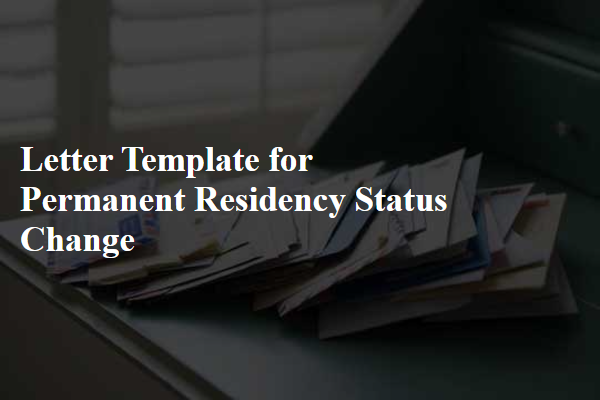
Applicant Information
The Permanent Residency Application involves crucial details of the applicant, such as full name, date of birth, and address. Applicant status must include current residency status details like visa type, expiration date, and family composition. Additional information may encompass employment history, including designated role, employer contact details, and duration of employment. Education history, highlighting degrees earned, institutions attended, and graduation dates, is essential for background verification. Contact information such as phone number and email is critical for communication throughout the application process. All documents must be accurate to streamline the transition to permanent residency status.
Reason for Status Change Request
Permanent residency status changes can occur for various reasons, including changes in personal circumstances, such as marriage, divorce, employment status, or significant life events like obtaining a new citizenship. Individuals may request a status change due to relocation to a different country or changes in family composition, like the birth of a child or adoption. Documentation, including marriage certificates, divorce decrees, or proof of employment, is often required. Additionally, applicants should provide evidence supporting their claim for change, adhering to guidelines set by immigration authorities to ensure processing efficiency. Consistent communication with relevant immigration offices can expedite the status change approval process.
Supporting Documentation
Permanent residency applications require extensive supporting documentation to ensure compliance with immigration laws. Essential documents include proof of residence, such as utility bills and lease agreements, indicating continuous residency for the required timeframe--typically one to three years depending on jurisdiction. Employment verification letters from employers, dated and signed, confirm stable employment status, while tax returns from the previous years demonstrate financial stability. Court documents (if applicable), such as divorce decrees or arrest records, may also be required to provide a comprehensive view of an applicant's legal history. Additionally, forms such as the I-485 (Application to Register Permanent Residence or Adjust Status) demand signatures and corresponding fees (ranging from $1,140 to $1,225), underlining the importance of meticulously compiling all applicable evidence for a successful application process.
Contact Information
Permanent residency status changes can significantly impact an individual's immigration journey, requiring precise documentation and updates. Contact information, such as a valid mailing address, phone number, and email, must be accurately provided to immigration authorities like the U.S. Citizenship and Immigration Services (USCIS). Maintaining updated contact information ensures that important correspondence regarding legal status, interviews, and required submissions reaches the individual promptly. Failure to provide correct contact details risks delays in processing or missed notifications regarding status changes. Proper formatting, including full legal names and relevant identification numbers, enhances clarity in communications with official bodies. It is essential to keep this information current to facilitate any necessary follow-up actions.
Formal Closing and Signature
The formal closing in correspondence is the final part before the signature, ensuring the message ends with professionalism and respect. Commonly used phrases for formal closing include "Sincerely," "Respectfully," or "Yours faithfully," followed by the signatory's name. For the signature, handwritten formats convey a personal touch, while typed names offer accessibility. Always include additional contact information if necessary, such as phone numbers or email addresses. This section ensures clarity on how to follow up or reach the individual in case of further queries regarding the permanent residency status change request.
Letter Template For Permanent Residency Status Change Samples
Letter template of notification for permanent residency status alteration
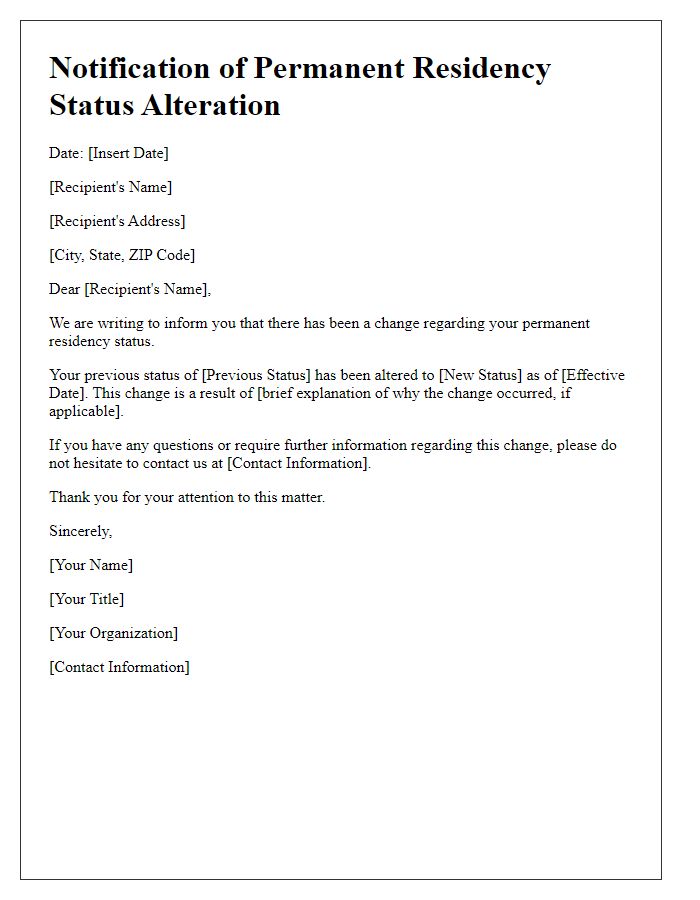
Letter template of inquiry regarding permanent residency status adjustment
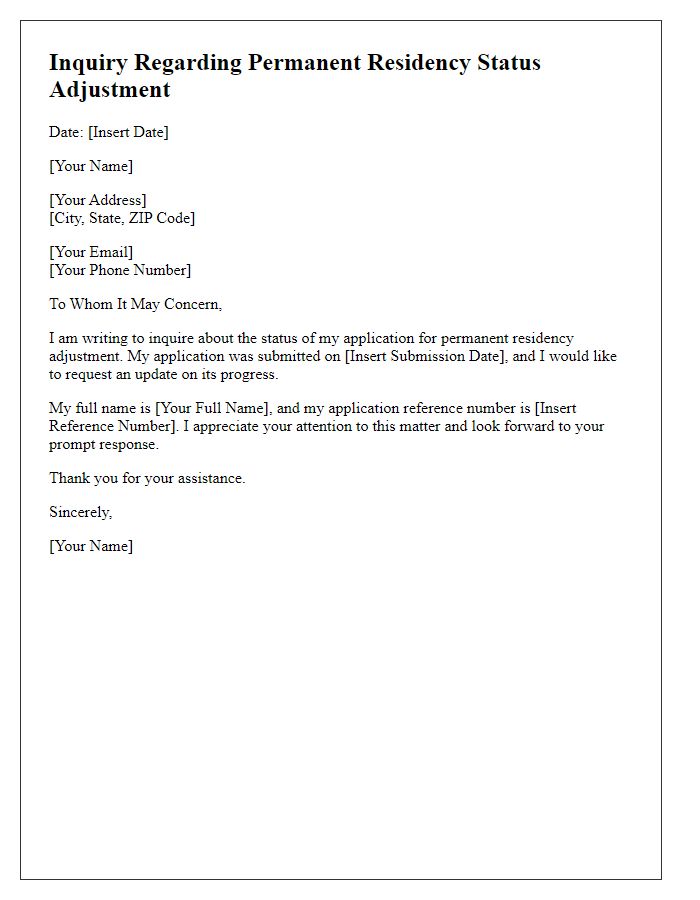

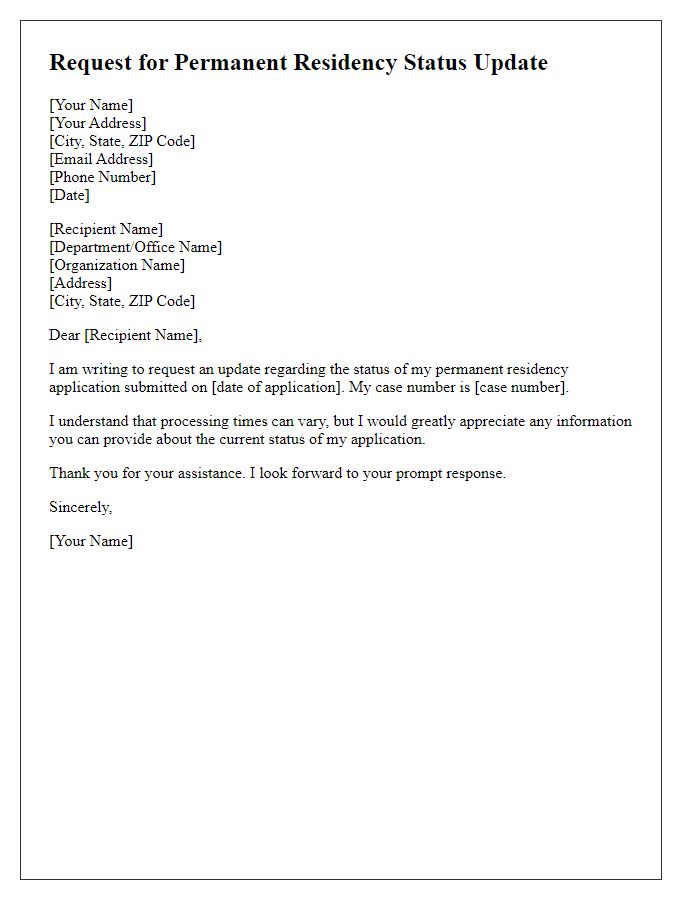
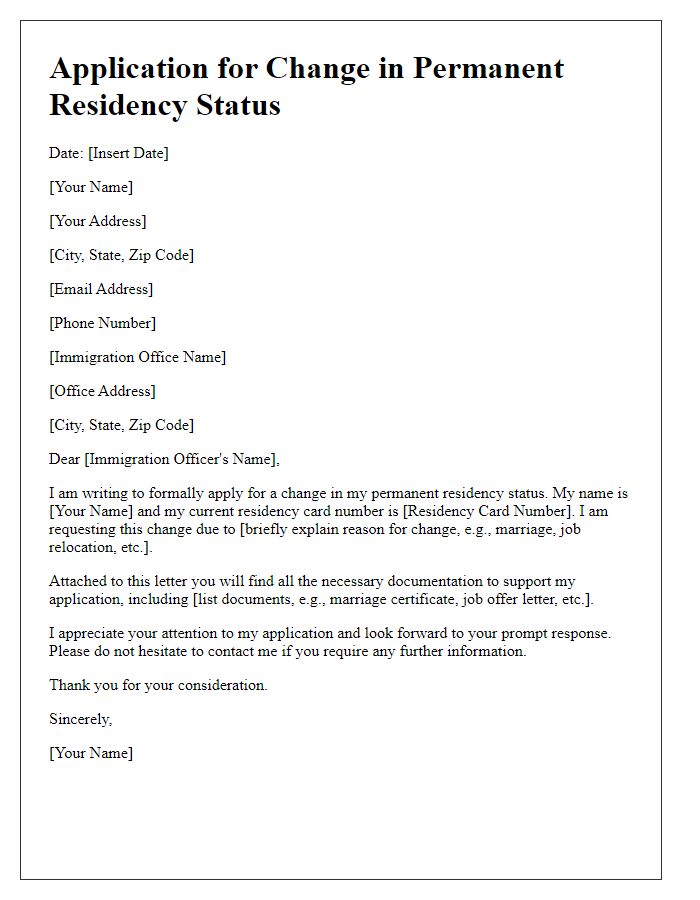
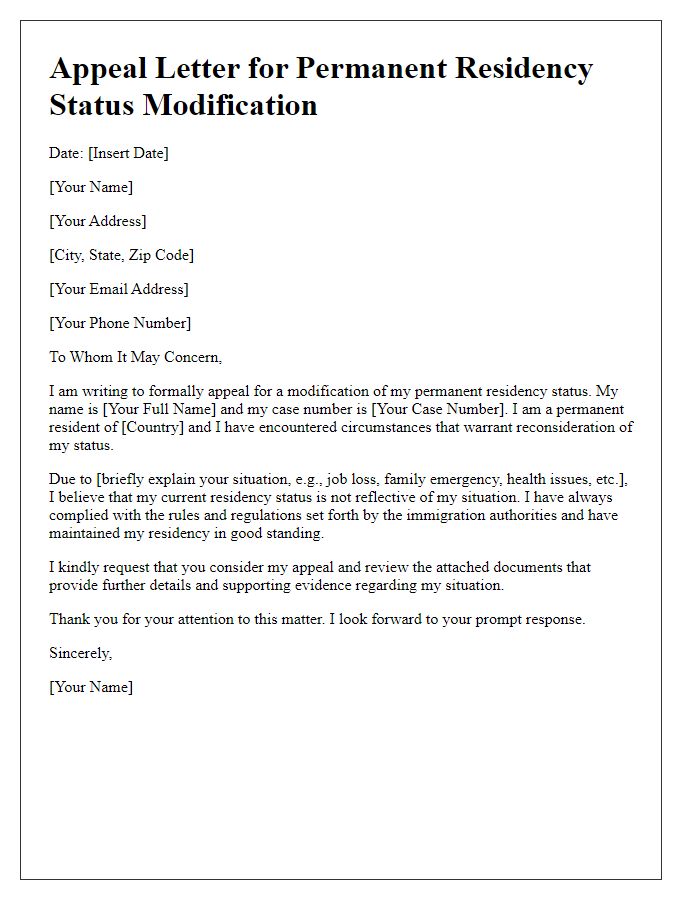
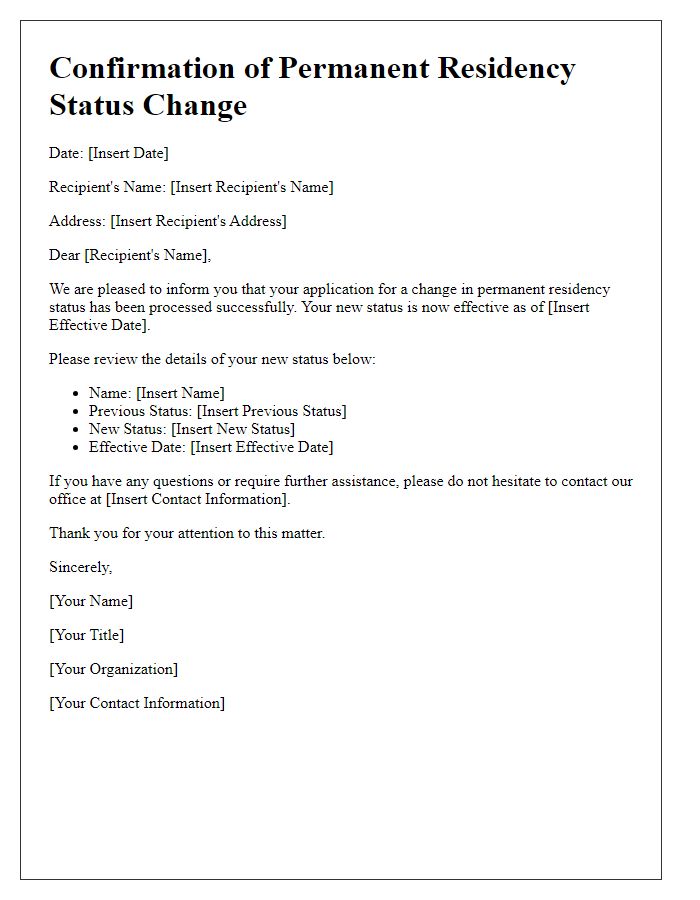
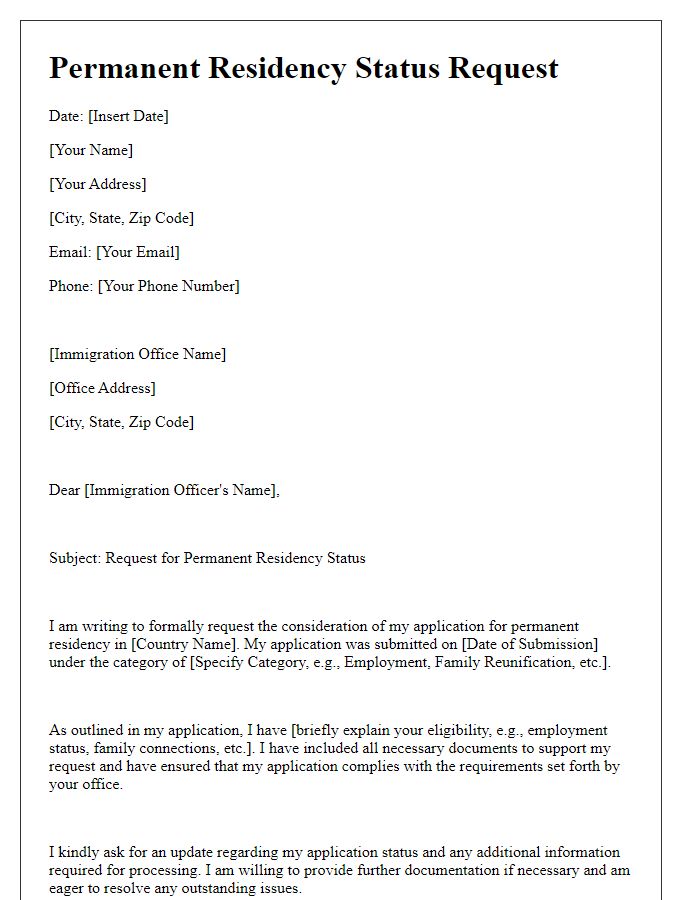
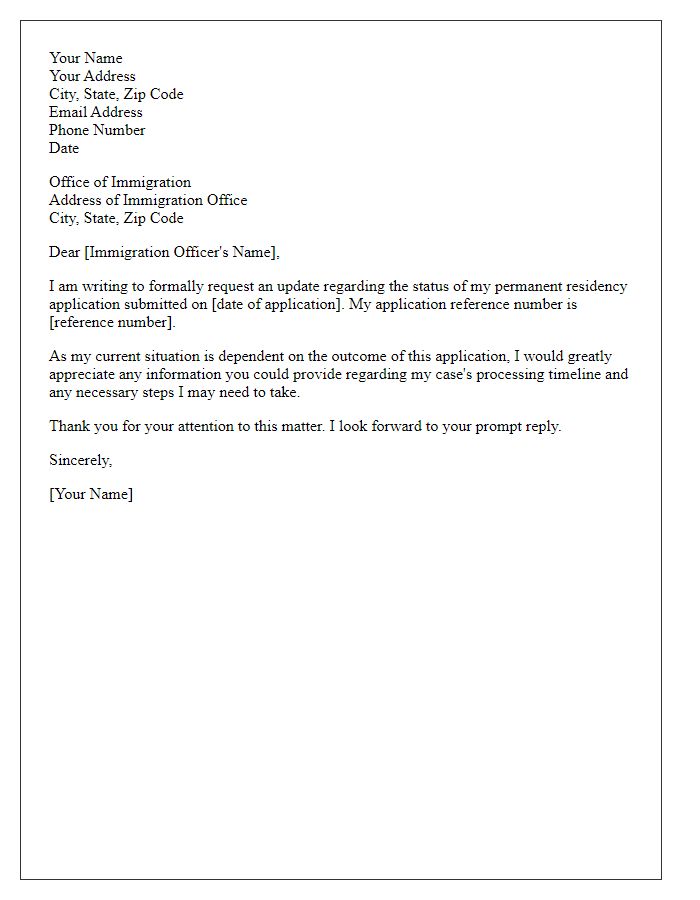
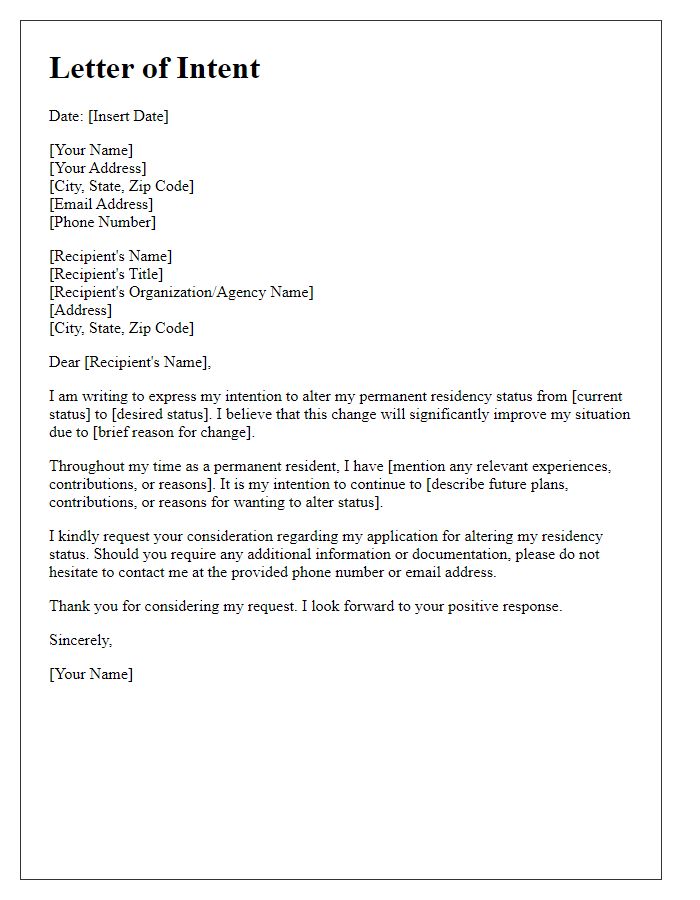
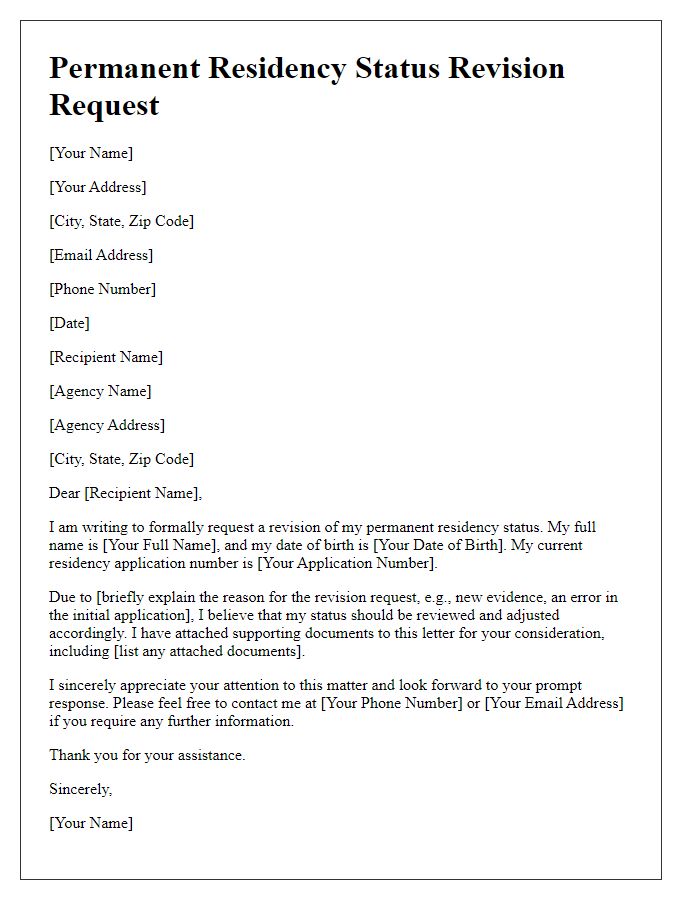


Comments